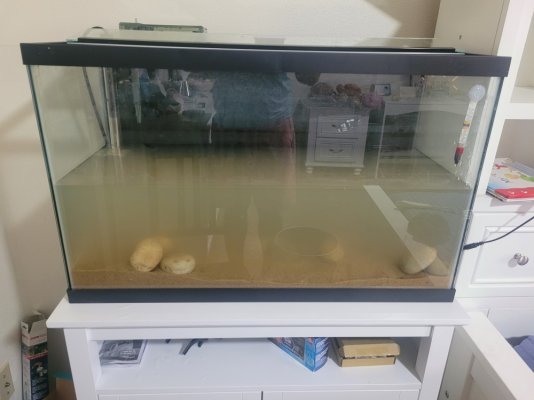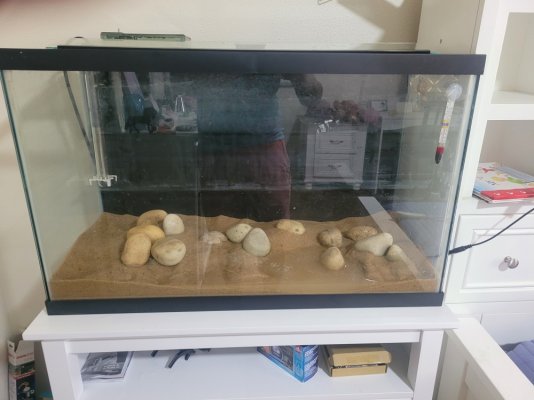I got my play sand this afternoon. I am currently washing it in a 5 gallon pail. Just adding water to the sand and stirring it up and then pouring out the excess water.
Does the sand have to dry out at all before I add it to the tank? Probably not since I am adding water. I also have some natural stones from the back yard that I would like to add. I assume I need to clean and then boil the stones before placing them in the tank.
What kind of water should I use when filling the tank?
Does the sand have to dry out at all before I add it to the tank? Probably not since I am adding water. I also have some natural stones from the back yard that I would like to add. I assume I need to clean and then boil the stones before placing them in the tank.
What kind of water should I use when filling the tank?


